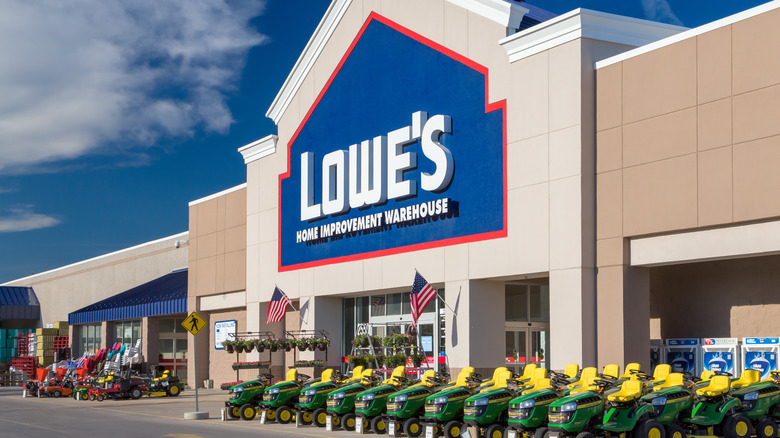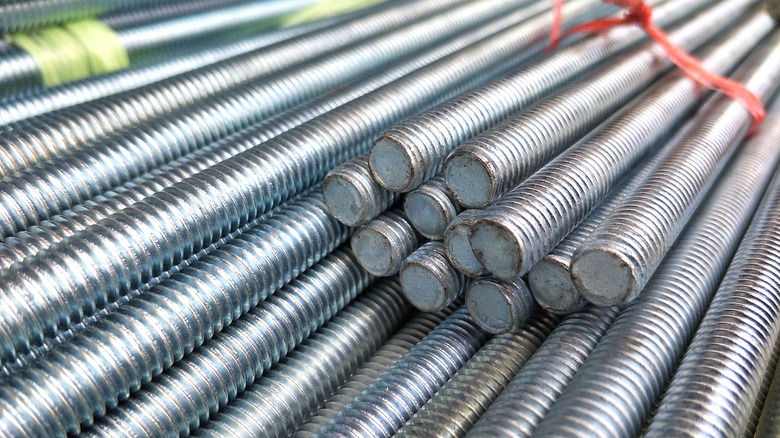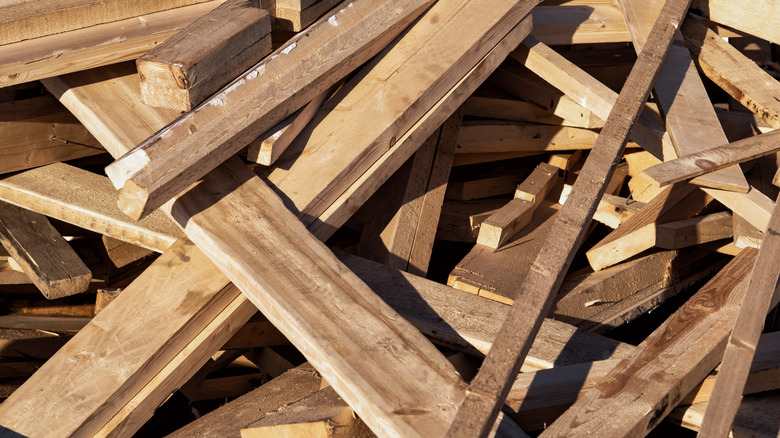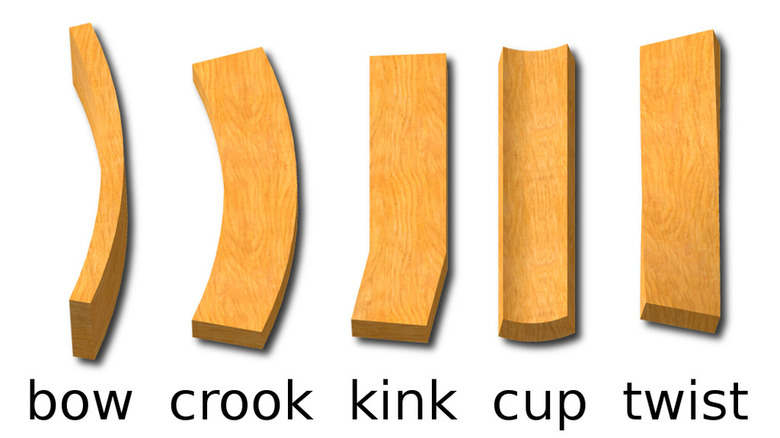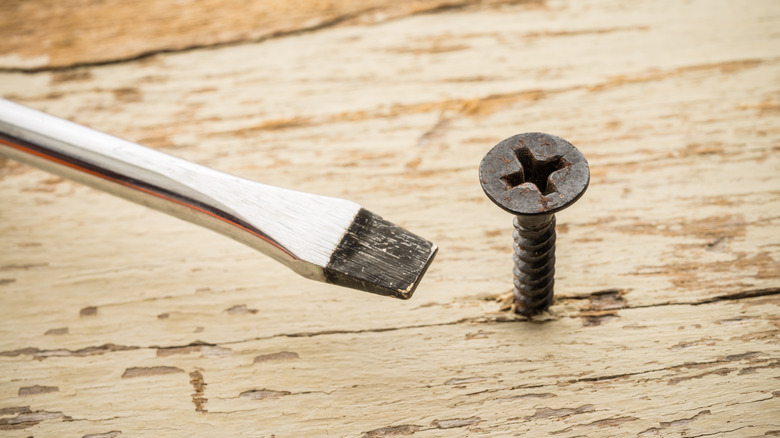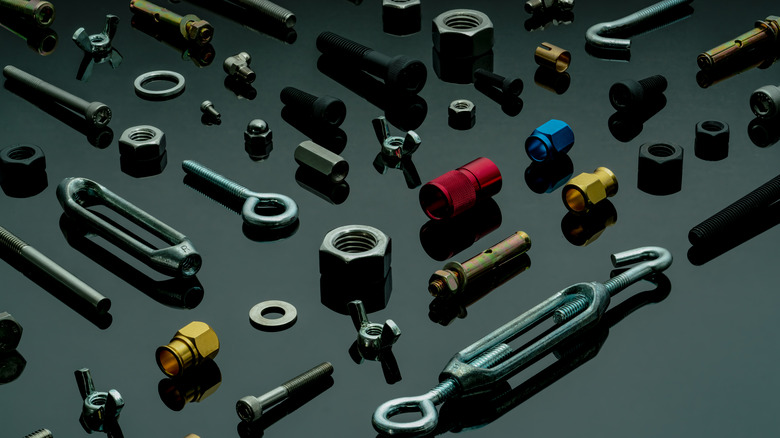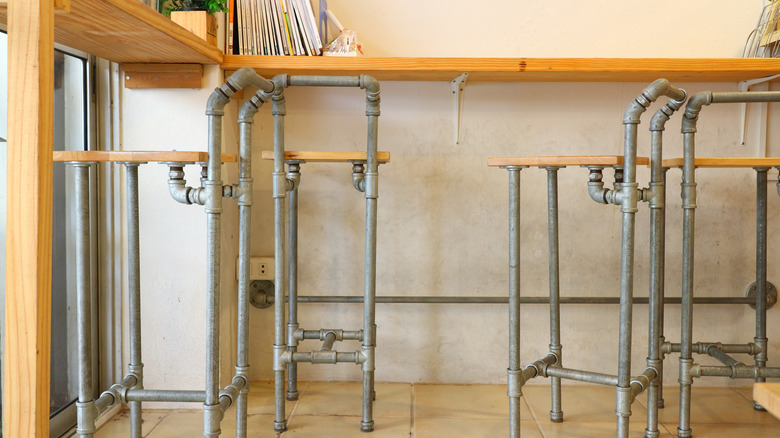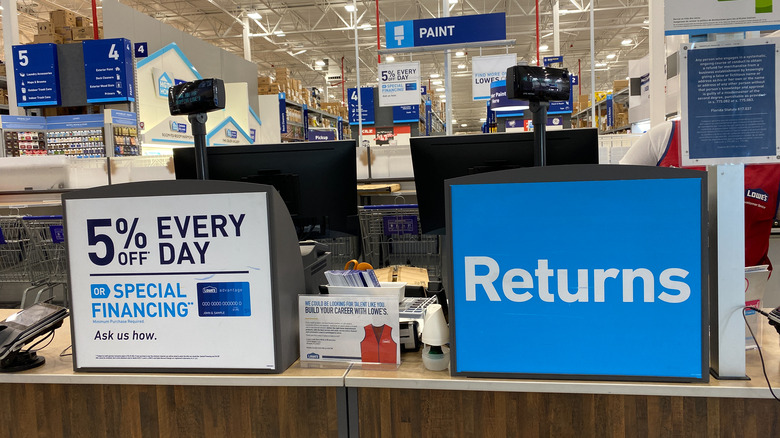14 Money-Saving Lowe's Shopping Hacks
There's no shortage of ways to save at Lowe's. Deals of the day, appliance special values, scratch-and-dent sales, mistint paint discounts, clearance sales, Black Friday and a half-dozen other annual sales, military discounts, suspiciously cheap installation services... even subscriptions by which you get discounts for regularly buying items — the list goes on.
These are all fine as such things go, but certainly nothing to brag about at a party. No, to truly wow the sorts of people who show up at a block party on a riding lawnmower, you have to hack the system somehow. No, not hack it like Crash Override and Acid Burn taunting the Secret Service in Hackers. More along the line of life hacks. Some of our hacks are off-label, unapproved strategies; some are officially sanctioned by Lowe's but hated by Lowe's staff; and some are slightly new takes on common shopping tricks and tips.
Hack: Recovery bags
You've probably encountered the scratch-and-dent appliances at Lowe's; most people have gotten lost among the open refrigerator boxes, dripping and unboxed water heaters, and dishwashers smelling suspiciously of casserole. Getting a discount on items in disrepair is not unusual, but it's increasingly uncommon as stores return or write off damaged merchandise. But you can still buy some kinds of imperfect merchandise at Lowe's by looking for recovery bags. These bags, usually clear plastic, are what the company puts stuff in when their original bags have split open, spilling mortar or mulch or topsoil all over the floor, according to Collin of shopping blog Hip2Save.
You can save as little as 10% on merchandise in recovery bags, which isn't much of a deal no matter how little was spilled, but you can also save as much as 50%. Some stores go even further and sell recovered spills for a buck, or group them into pallets and sell those for next to nothing. Lowe's doesn't advertise a policy about the discount of merchandise in recovery bags, but you can glean some details from posts and reviews on sites like Tomtoville. but ultimately the handling of these appears to depend entirely on the store, so your mileage might vary.
Hack: Buy bigger, not more
Buying in bulk, as in Lowe's brilliantly named Lowe's Buy In Bulk program, is always a good idea if you happen to need 700 joist hangers or 1200 pounds of sand. But that's not what we're talking about here. No, we're discussing the joys and economies of buying big things and splitting them up, rather than buying a bunch of small things. Here's an example: if you're in the market for a handful of half-inch threaded rods (and aren't we all?), you can pay as much as $2.68 per foot for 1-, 2-, and 3-foot lengths. But the electrical department has a strut section, and there you'll find 10-foot rods for $16.98, or $1.70 per foot. Beware: this doesn't always work. The 10-foot ⅜-inch rods are actually more expensive per foot than the 2- and 6-foot lengths.
Such savings of scale present themselves all over Lowe's stores: you can but a two-foot PVC pipe for $13.15 or a 10-foot pipe for $21.91. The same applies to short boards, quarter-sheets of plywood, Of course, if you will only ever need a two-foot section of 2-inch schedule 40 PVC, you'd be saving nine bucks by picking up the short pipe. This strategy depends on how often you'll need the larger quantities to begin with.
Hack: Cutoffs and scraps
You probably know about buying Lowe's worst lumber for cheap in the cull lumber section, and you probably know they'll cut your expensive lumber for you. But did you know you can buy someone else's expensive lumber for little or nothing when someone has left cut-offs behind? As with Home Depot, this is apparently the kind of thing that happens when a Lowe's customer is buying wood for the first and last time in their lives, or when someone has so much money they can't be bothered to keep half a sheet of $60 plywood around, as noted by Aisle of Shame. Depending on whom you ask, someone else's trash can become your splintery treasure... especially during times when wood is so expensive.
In terms of being efficient, though, this might not be your best bet. You can often get all manner of free wood from construction site cast-offs once you've befriended a supervisor on-site (via Crafted By the Hunts). These will include cut-offs, but also full unusable (for their purposes) boards and occasionally boards they simply bought too many of.
Hack: Discarded pots and trays for plant propagation
You will occasionally see reports that you can get free plants from Lowe's because some stores put their written-off plants (probably annuals past their sales dates) by the dumpsters for people to haul away. This appears to violate Lowe's company policy, even if you get permission, and it's dangerously close to the illegal practice of "propllifting," in which people take bits of discarded plant material to propagate into new plants.
What you can often get your hands on are the plastic pots plants come in, as well as the trays they're shipped in. These are very useful for propagation, and Lowe's has a recycling program for keeping them out of landfills. In fact, they'll take the pots from plants purchased elsewhere. The pots and trays can often be picked up for free at both Lowe's and Home Depot (via Mavis Butterfield and Brie of TerraForums). There's stiff competition for these in some stores, so check early and often.
Hack: Pick your own lumber
With lumber quality declining even before pandemic shortages set in, according to LBM Journal, it's more urgent than ever that you understand how to pick a good board from the pile at Lowe's. Buying bowed, crooked, kinked, cupped, twisted, checked, or cracked lumber can increase your costs by creating more waste. You can eliminate a lot of the warping risk by knowing how to select lumber in the store.
You can certainly study up on lumber grades using such resources as this excellent primer from Thomas Publishing, but grades won't necessarily tell you about warpage, and what you really need to do is look at the board, advises Brett McKay of the Art of Manliness. First, inspect the board for checks (cracks only partway through a board), splits (cracks all the way through a board), shakes (separation along growth rings), and unstable knots that might fall out. Consult the image above and look (or "sight") down the length of the board to check for any of these issues. Finally, inspect the endgrain and discard any board for which you can see a full-circle growth ring, since avoiding the pith/heartwood is a great way to avoid future warping (via the Growit BuildIt blog).
Substitution: the other right tool for the job
One sure-fire way to save money is the time-honored practice of substitution, replacing the item you "need" with something cheaper or more readily available. You can realize instant and large savings when it comes to tools by substituting cheaper but capable alternatives, rather than buying an expensive, specialized tool to use once and store away forever. There are always substitutions you can make in a pinch at home or in your workshop, such as the (sometimes goofy) tool substitutions suggested by Sparetoolz, but looking for replacements at Lowe's both contracts and improves the options available to you.
Consider a sudden and unavoidable need to create a round hole in a piece of wood. Lowe's offers a number of good ways to do this (spade bits, forstner bits, and hole saws) and probably some bad ways as well (such as carbide burrs). These have their own purposes: spade and auger (helical or spiral) bits for large and messy holes that can go through or partway through a board); forstner bits for neat holes with flat bottoms; and hole saws, which can only cut all the way through a board (via Empire Abrasives). Let's say you need a 1-inch hole all the way through a 2x4 board. Scanning Lowe's offerings of these three hole-making options, a spade bit is almost half the price of the most expensive option — great to know if you're trying to save money.
Substitution: fasteners and tape (and not just duct tape)
It might not be strictly true to say there are more types of tape and fasteners at hardware stores than stars in the galaxy, but since our brains can't fully comprehend either it's fair to say there might as well be. Sometimes you're stuck looking for a particular, very specific item like a stainless steel ¾-inch reverse-threaded ¼-28 socket cap bolt. (Good luck!) But in a lot of cases a substitute will work just fine, and can often save you money in the process. (Keep in mind when seeking substitutes that nuts, bolts, and any other metal they touch should generally be matched to avoid galvanic corrosion, advises APP Manufacturing.
One thing you'll find yourself doing repeatedly in the DIY world is unwinding, winding, and storing extension cords. Unless you get fancy and use the chain-link method to store your cords (via Wirecutter), you'll probably end up with a coil and the strong need to put a strap around it. Hook-and-loop wraps are available for this task; Lowe's sells a three-pack of 12-inch wraps for a mere $3.98. But try out some blue painter's tape, which you might already have around. It's reasonably strong, doesn't leave adhesive residue, and you can get 720 times as much (60 inches), with which you can wrap more than three cords at once. These sorts of replacements are endless; consult any tips-and-tricks Youtube video for more suggestions.
Substitution: raw materials, or, when life gives you lemons...
When we think of substituting materials, we are often thinking about cooking. Substitutions aren't always possible with home improvement items. Often this is a matter of safety, and therefore it's often a building code issue. Options like "thinner wire" or "DWV pipe instead of schedule 40" aren't options, they're disasters in the making. But some substitutions (of both quantity and quality) are acceptable. In the 1970s, methods of framing that used substantially less lumber were developed (originally called "optimum value engineering," some clear-headed marketer later changed it to "advanced framing"), allowing for 24-inch-on-center framing for load-bearing walls and the use of smaller boards for other walls, according to the USDA Forest Products Laboratory. You can use similar methods (use a 2x3 instead of a 2x4, for example) to reduce expenses for many projects.
And it's not all about wood. For example, Lowe's markets iron pipe as a decorative material (it's basically a substitution for, you know, furniture), but at $45.92 for a 10-foot pipe, you might consider painted PVC or electrical conduit instead for projects not depending on too much strength.
DIY: happily using the wrong materials
If anyone knows about the power of substitution, it's the DIY community. Here's an example. Back during the original dot-com boom, it was de rigueur to cover your company's walls with whiteboards; you never know when some Big Plan would emerge requiring 200 square feet of diagrams. Small operations quickly discovered that this expense couldn't be justified by their paltry $2 zillion market cap, so some genius discovered that shower board could make a superficially similar and much cheaper whiteboard, so long as you weren't concerned about such quibbles as "durability" and "erasing." This still works today, of course, even if you won't plaster every square inch with them, as demonstrated by Fairy Dust Teaching.
Other ideas include painting a wall instead of investing in a projector screen (via Projector Central), or making a DIY green screen so you can show your family vacationing on the moon. Sometimes the substitution is a perfect fit, like using 100% silicone caulk in place of formulations specifically made for creating molds (via Instructables).
DIY: professionally using the wrong materials
Depending on which particular backwater of Pinterest you accidentally wade into, you can easily discover entire professions obsessed with saving money by making things themselves, often with stuff from big-box home improvement stores. Photographers, videographers, and teachers are famous for DIY savings in a culture that doesn't properly value education or making Minecraft videos for YouTube, so there are lots of possibilities there, according to Chalk & Apples and Fstoppers. Check out, for example, this very thorough discussion concluding that PTFE thread seal tape is a great (and cheap!) white balance reference for photographers (via FastRawViewer). Or try this backdrop stand, which makes creative use of the very un-glamorous toilet plunger (via DIY Photography).
Speaking of professionalism, musicians, often broke and sometimes only "professional" in the sense that they'll take money for just about anything, also have a healthy, substitution-rich DIY culture that loves some Lowe's. If your vocal talent is tired of being shuffled into a closet like your 10th grade boyfriend when mom came home early, macProVideo suggests a few other alternatives to pricey vocal isolation booths, like surrounding them with packing blankets. And you can soundproof entire rooms using rock wool insulation.
Artists, meanwhile, can get the supplies they need while mostly staying out of dumpsters with tricks from the likes of Artspace Magazine, such as how to make a cheap painter's canvas from canvas dropcloths.
DIY: using someone else's tools
DIY substitution reaches its pinnacle in the practice of tool rental, which is now available at many Lowe's locations. Tool rental is the process by which you start an unfamiliar project and rent, rather than buying, some expensive tool it requires. Plan carefully. It can be difficult to rent commonly-used tools, so you'll want to schedule your project around when you're able to rent what you need. You'll also want to make sure that whichever tool you're renting works as it should, and if you haven't used it before, you'll need to learn how to use the tool safely. Still, expect to save as much as 2% versus buying the tool outright.
For certain tools, you might also consider your local auto parts stores, which often have free tool loaners (with substantial security deposits), according to O'Reilly Auto Parts. Most of these tools are auto-repair-specific, but some (vacuum pumps, for example) are also applicable in home improvement situations.
Price matching... maybe
For fans of going to Lowe's not knowing what price they're going to pay, the stores offer a mostly imaginary price-matching program, which ostensibly gives you the lowest price you can find among its competitors. Most price-matching requires matching product numbers, and this can be the gotcha. Large retailers sometimes require different model numbers for identical products in order to avoid price-matching commitments, says Cheapism. By the time all the listed exclusions are examined, it can be nearly impossible to meet the requirements for a price match, so you will often have to rely on the goodwill of the cashier or customer service person, who often has the latitude to make these decisions. Here are some ways to find the best price matches, and the ways to make them work.
Cheapism recommends that you bring along proof of your price match, such as a sales flyer or a web page on your phone. You can also use services like PriceCase to track prices on individual products at competitors, and get alerts when there are major changes. BrickSeek will look for all local prices on a particular product and show you the lowest current prices among stores that might qualify for Lowe's price matching.
Clearance plants: often not as hopeless as they look
If you have a green thumb and can't kill your plants yourself, Lowe's is happy to do it for you, and will give you a 50-90% discount to boot! LowesEmployees.com says that clearance plants are usually simply under-watered, and anyone with even a moderately green thumb should be able to nurse them back to health. Don't buy anything that appears to already be dead, of course. The clearance plant racks are available between Memorial Day and Labor Day.
Clearance plants aren't typically returnable, so if you're hankering for a full refund you will have to kill the plants yourself. The good news is that Lowe's offers 12-month return terms on trees, shrubs, and other perennials, according to Lowe's. If you kill it within a year, they'll take it back no questions asked. Other plant purchases include a 90-day return policy. The company stresses that you should be sure to bring your receipt.
Easy returns
Returns are a big deal, and not just in the garden center, so while this tip won't exactly save you money, it will put more in your pocket at the end of the project. The secret? Simply shopping at Lowe's. One of the attractions of big-box stores versus stores like electrician and plumber supply houses is that the latter won't typically, or at least happily, take returns without restocking fees. Among the major trade suppliers, for example, Ferguson subjects returns to re-stocking fees. Quality Plumbing Supply will accept returns within 30 days, but you must have a Return Merchandise Authorization (RMA); there's a 15% restocking fee after 15 days and a 25% restocking fee when you don't have an RMA, and the site lists a number of major exclusions. With a receipt or the right payment method, Lowe's will take returns with relatively little hassle.
Bonus: if you're feeling the need to be more closely watched at Lowe's itself, consider trying to procure their Markdown Report from one of the employees. This legendary, and possibly mythical, document lists all of the sale items in the store, and even knowing about it can cause people in blue vests to start radioing managers immediately. But if you pull it off, the Markdown Report is supposed to be an invaluable time-saver (via LowesEmployees).
